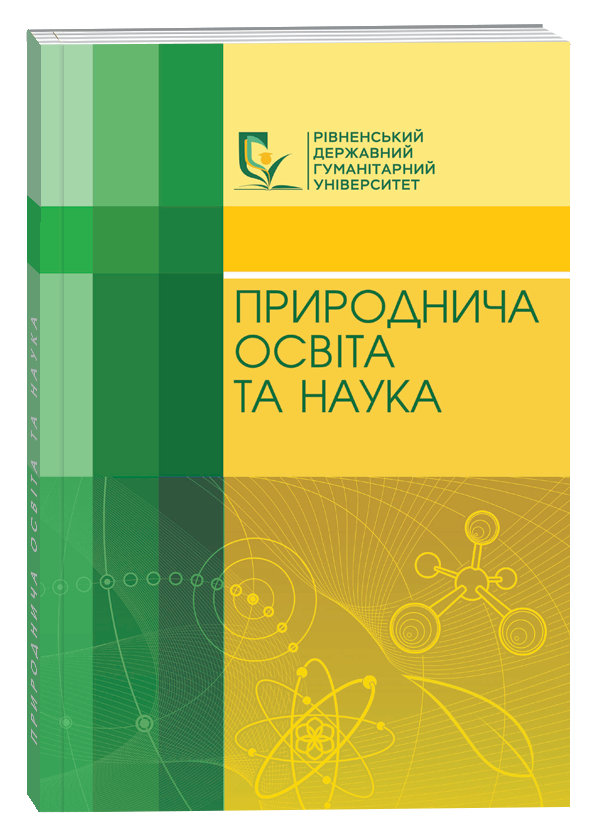PHYTOHORMONAL STATUS AND ENZYMATIC ACTIVITY OF COMMON WHEAT UNDER THE ACTION OF VIRUS INFECTION
Abstract
The article is devoted to the study of the formation of wheat grain productivity under the influence of artificial infection with wheat streak mosaic virus(WSMV) on the functional links of the plant organism: the content of phytohormones IAA and ABA and their ratio, the activity of antioxidant enzymes in the leaves of autumn and spring sowing of emmer wheat (winter and spring), structural indicators of the yield. Research methods: Microbiological, molecular genetics, electron microscopic, biometric, statistical. Results. The presence of wheat streak mosaic virus in wheat leaves with WSMV symptoms was confirmed by the polymerase chain reaction (PCR). It was found that the ratio of phytohormones IAA/ABA in the leaves changed depending on autumn or spring sowing of wheat and WSMV infection. It was established that both in autumn (winter) and spring (spring) sowing of common wheat, a general dynamic of changes was observed – an increase in the activity of antioxidant enzymes from 14 to 21 days and a decrease on day 28 in healthy and infected plants. The studies established a significant suppression of the value of the main structural indicators of productivity of common wheat under the influence of WSMV infection: a decrease in the number of productive shoots, stem height, number of spikelets in the spike, length, and number of grains in the main spike, mass of grains of the main and lateral spike, mass of 1000 grains. Conclusions. It was established that healthy and virus-infected plants of winter-spring wheat under different sowing methods – autumn or spring – had similar dynamics of changes in the content of phytohormones in leaves and the activity of antioxidant enzymes but differed in their ratio. It was found that, in terms of the effect on productivity elements of common wheat grown in different sowing seasons – in spring or autumn – had different sensitivity to viral infection. Greater tolerance to infection by WSMV was found in autumn-sown (winter) wheat plants.
References
2. Войтенко Л.В., Косаківська І.В. Поліфункціональний фітогормон абсцизова кислота. Вісник Харківського національного аграрного університету. Серія «Біологія». 2016. № 1(37). С. 27–41.
3. Комплексні хелатовані добрива у посівах пшениці: науково-методичні рекомендації. Київ : ТОВ «ЦП «КОМП-РИНТ», 2016. 32 с.
4. Гормональна система рослин за дії важких металів / І.В. Косаківська, В.А. Васюк, Л.В. Войтенко, М.М. Щербатюк. Київ : Інститут ботаніки ім. М.Г. Холодного, 2022. 176 с.
5. Білявська Л.О., Надкернична О.В., Копилова О.Б. Біосинтез фітогормонів ґрунтовими грибами Cladosporium cladosporioides. Мікробіологія. 2017. № 79 (3). С.3–13.
6. Ярошенко М., Бреммер К., Шонбергер Х. Фітогормони та фітогормональна регуляція рослин. Агроном : науково-виробничий журнал. 2012. № 2. С. 40–43.
7. Alazem M., Lin N.S. Roles of plant hormones in the regulation of host-virus interactions. Mol Plant Pathol. 2015. № 16 (5). Р. 529–540. doi: 10.1111/mpp.12204.
8. Alazem M., Lin N.S. Antiviral roles of abscisic acid in plants. Front Plant Sci. 2017. № 8. Р. 1–10.
9. Bolwell G.P. Wojtaszek P. Mechanisms for the generation of reactive oxygen species in plant defense – a broad perspective. Physiol. Mol. Plant Pathol. 1997. Vol. 51. P. 347–366.
10. Choudhury Sh., Larkin Ph., Meinke H., Hasanuzzaman M.D., Johnson P., Zhou M. Barley yellow dwarf virus infection affects physiology, morphology, grain yield and flour pasting properties of wheat. Crop and Pasture Science. 2019. 70. Р. 16–25. https://doi.org/10.1071/CP18364.
11. Chen K., Li G.-J., Bressan R.A., Song C.-P., Zhu J.-K., Zhao Y. Abscisic acid dynamics, signaling, and functions in plants. J. Integr. Plant Biol. 2020. № 62. Р. 25–54. https://doi.org/10.1111/jipb.12899.
12. Choudhury S., Hu H., Meinke H., Shabala S., Westmore G., Larkin P., Zhou M. Barley yellow dwarf viruses: Infection mechanisms and breeding strategies. Euphytica. 2017. № 213. Р. 168. doi: 10.1007/s10681-017-1955-8.
13. Davis T.S., Bosque-Pérez N.A., Popova I., Eigenbrode S.D. Evidence for additive effects of virus infection and water availability on phytohormone induction in a staple crop. Front. Ecol. Evol. 2015. № 3. doi: 10.3389/fevo.2015.00114.
14. Dey S., Wenig M., Langen G., Sharma S., Kugler K.G., Knappe C., Hause B., Bichlmeier M., Babaeizad V., Imani J., et al. Bacteria-triggered systemic immunity in barley is associated with WRKY and ethylene responsive factors but not with salicylic acid. Plant Physiol. 2014. № 166. Р. 2133–2151. doi: 10.1104/pp.114.249276.
15. de Haro LA, Arellano SM, Novák O, Feil R, Dumón AD, Mattio MF, Tarkowská D, Llauger G, Strnad M, Lunn JE, Pearce S, Figueroa CM, Del Vas M. Mal de Río Cuarto virus infection causes hormone imbalance and sugar accumulation in wheat leaves. BMC Plant Biol. 2019. № 19 (1). Р. 112. doi: 10.1186/s12870-019-1709-y.
16. Gietler M, Fidler J, Labudda M, Nykiel M. Abscisic Acid-Enemy or Savior in the Response of Cereals to Abiotic and Biotic Stresses? Int J Mol Sci. 2020. № 21 (13). Р. 4607. doi: 10.3390/ijms21134607.
17. Huliaieva H., Tokovenko I., Maksin V., Kaplunenko V. and Kalinichenko A. Effect of nanoaquacitrates on physiological parameters of fodder galega infected with phytoplasma. Ecol Chem Eng S. 2018. № 25 (1). Р. 153–168. doi: 10.1515/eces-2018-0011.
18. Kosovák., Prášil I.T., Vítámvás P. The relationship between vernalization- and photoperiodically-regulatedgenes and the development of frost tolerance in wheat and barley. Biologia Plantarum, 2008. № 52 (4). Р. 601–615. doi: 10.1007/s10535-008-0120-6
19. Mandadi K.K., Scholthof K.-BG. Plant immune responses against viruses: how does a virus cause disease? Plant Cell. 2013. № 25 (5). Р. 1489–1505. doi: 10.1105/tpc.113.111658.
20. Mantyla E., Lang V., Palva E.T. Role of Abscisic Acid in Drought-Induced Freezing Tolerance, Cold Acclimation, and Accumulation of LT178 and RAB18 Proteins in Arabidopsis thaliana. Plant Physiol. 1995. № 107 (1). Р. 141–148. doi: 10.1104/pp.107.1.141.
21. Mishchenko L.T., Dunich A.A., Mishchenko I.A., Petrenkova V.P., Mukha T.I. Monitoring of Economically Important Wheat Viruses under Weather Conditions Change in Ukraine and Investigation of Seed Transmission of Wheat Streak Mosaic Virus. Bulg. J. Agri. Sci. 2018. № 24. Р. 660–669.
22. Paulmann M.K., Kunert G., Zimmermann M.R., Theis N., Ludwig A., Meichsner D., Oelmüller R., Gershenzon J., Habekuss A., Ordon F., et al. Barley yellow dwarf virus infection leads to higher chemical defense signals and lower electrophysiological reactions in susceptible compared to tolerant barley genotypes. Front. Plant Sci. 2018. № 9. Р. 145. doi: 10.3389/fpls.2018.00145.
23. Perry K.L., Kolb F.L., Sammons B., Lawson C., Cisar G., Ohm H. Yield Effects of Barley yellow dwarf virus in Soft Red Winter Wheat. Phytopathology. 2000. № 90(9). Р. 1043–8. doi: 10.1094/PHYTO.2000.90.9.1043.
24. Rajput V.D., Singh R.K., Verma K.K., Sharma L., Quiroz-Figueroa F.R., Meena M., Gour V.S., Minkina T., Sushkova S., Mandzhieva S. Recent Developments in Enzymatic Antioxidant Defence Mechanism in Plants with Special Reference to Abiotic Stress. Biology (Basel). 2021. № 10 (4). Р. 267. doi: 10.3390/biology10040267.
25. Sachdev S., Ansari S.A., Ansari M.I., Fujita M., Hasanuzzaman M. Abiotic Stress and Reactive Oxygen Species: Generation, Signaling, and Defense Mechanisms. Antioxidants. 2021. № 10 (2). Р. 277. https://doi.org/10.3390/antiox10020277.
26. Wang A. Dissecting the molecular network of virus-plant interactions: the complex roles of host factors. Annu Rev Phytopathol. 2015. № 53. Р. 45. doi: 10.1146/annurev-phyto-080614-120001.






